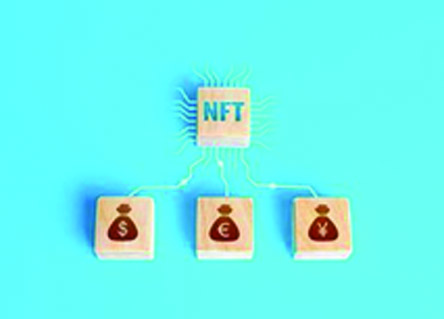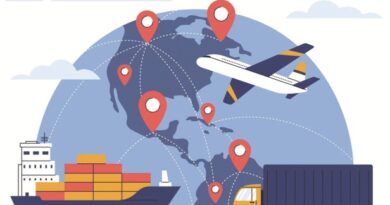Modern and Creative Ways of Money Laundering: A Sneak Peek in Modus Operandi
Every year, an astonishing $800 billion to $2 trillion circulates through the global economy as laundered money, making up 2-5% of global GDP. This isn’t a novel phenomenon, yet the tactics behind it are in a constant state of flux and sophistication due to technological advancements and the globalized nature of today’s world. Criminals are continually crafting more complex methods to launder money, posing significant challenges for regulatory bodies in detecting and halting these illegal activities.
Beyond the immediate financial loss, individuals who fall prey to such frauds endure profound emotional distress. Financial institutions are not spared either; the consequences they face extend beyond monetary penalties. They risk losing something much more critical – public trust. Inadequate adherence to Anti-Money Laundering (AML) regulations not only places these institutions at odds with legal frameworks but also inflicts severe harm on their reputation and brand integrity. This underscores the importance of implementing robust AML technologies.
While one may be aware of the more common money laundering methods like bank laundering, smurfing, or fraudulence through cash, criminals are now using advanced technology and more unconventional techniques to carry out their fraud schemes.
Here, we discuss seven such creative money laundering methods to watch out for.
1.Auction of Art and Creatives:Art auctions, traditionally viewed as exclusive events for the financially upper-class individuals, is now increasingly being utilized as conduits for laundering illicit funds. The non-transparent nature of art valuation plays into the hands of criminals, allowing them to transfer large amounts of money hiding behind legitimate transactions with relative ease.
The process often begins with the purchase of an artwork using funds acquired through illegal means. The inherent value of the art piece is then subject to manipulation. For example, it might be resold at an inflated price to an accomplice, thereby converting the “dirty” money into “clean” money. The revenue from this transaction is then claimed as legitimate income.
At times, the artwork may not physically move between parties, but officially, it appears as a bona fide sale, thus enabling criminals to legitimize their illegitimate gains through what seem to be legitimate art dealings.
Several factors make art auctions particularly susceptible to money laundering:
Non-Transparent Valuation: Art’s worth is inherently subjective, leading to significant discrepancies in valuation that can be exploited for financial manipulation.
Privacy Concerns: The privacy sought by high-end art auction participants can be leveraged by criminals to conduct significant transactions unnoticed.
Cross-Border Transactions: The frequent international buying and selling of art facilitate the cross-border movement of money, camouflaged as lawful exchanges.
Easy movement of Art Pieces: Art Pieces can be moved easily from one place to another place even internationally without much hassle. Where the hidden value of art piece might be huge, the movement is not that much restricted.
In recent years, many countries have started applying money-laundering rules to the art world. Because of this, criminals are now turning to the internet and modern technology to clean their illegal money.
2.NFTs (Non-Fungible Tokens):NFTs (Non-Fungible Tokens), which are digital art pieces whose ownership can be anonymous and whose values can change rapidly, are becoming popular among criminals for money laundering. They like NFTs because they don’t need to reveal their identitywhile dealing with someone.
The Financial Crimes Enforcement Network (FinCEN) points out that NFTs can be sent over the internet quickly and across countries without worrying about the distance. This makes it easy for criminals to use digital art to hide and move their illegal money without the usual costs or risks of moving physical items.
A typical way to launder money is by first buying an NFT cheaply with one digital wallet, and then selling it to themselves at a higher price with a different wallet, without needing to prove their identity. Finally, the NFT is sold to someone who doesn’t know it was part of a scheme, turning their dirty money into clean money through what looks like a normal sale.
3.Online Gaming Space:Online games often come with their own digital currencies and items, which can be traded both in the game and on outside websites. This has created a big online market where these virtual goods are bought and sold for real money. Criminals have seen this as a chance to clean their dirty money.
Some common ways they do this include:
- Buying virtual items with bad money and selling them for clean money on other websites.
- Using virtual items from games to buy things in the real world, like weapons or drugs.
- Moving virtual goods between different game accounts to hide where the items originally came from.
- Using virtual items to gamble in games.
4.Cryptocurrency:Cryptocurrencies are popular with people trying to launder money because it’s hard to trace transactions back to them. They often use services called crypto tumblers or mixers, which mix up illegal money with clean money, making it hard to find out where the money originally came from.
Money laundering using cryptocurrencies follows the general pattern of placement-layering-integration but with some specific features. Cryptocurrencies are anonymous at their point of creation therefore the placement stage of the money laundering process is often absent.
It only takes a few seconds to create an account, and this is free of cost. It is possible to create a large money laundering scheme with thousands of transfers at a low cost and to execute it using a computer script.
Due to rapid increases in exchange rates, with some cryptocurrencies showing 10,000% growth, it is very easy to justify unexpected wealth through cryptocurrencies.
5.Trade-Based Laundering: Trade-based money laundering (TBML) is defined by the Financial Action Task Force (FATF) as the process of camouflaging the proceeds of criminal activity and moving money using trade transactions in an effort to cover up their unauthorized origin or finance activities. In accordance with the FATF, the goal of trade-based money laundering is the movement of money, which the trade transactions enable. The proceeds of serious crimes are transferred from one jurisdiction to another using a variety of TBML techniques in order to make them appear legitimate.
Money laundering can be hidden behind the trading of almost any kind of item. The FATF has pointed out that this usually happens with things like gold, precious stones, minerals, cars and their parts, food and farm products, clothes, used textiles, small electronics, building supplies, machinery, and energy resources. The reason criminals pick these items is that they’re hard to check thoroughly at customs. It would take way too much time to verify all the details in the paperwork for a whole shipment.
When these items are sent across several countries to reach the buyer, it gets even easier to hide where they originally came from. For items whose prices can vary a lot, it’s tough to tell if the price listed in the documents is too high or too low. And items like precious metals and minerals that are obtained illegally are especially appealing to criminals because, once cleaned, they can be used just like cash.
6.Shell Companies and Offshore Accounts:Money launderers exploit shell companies to hide the origin of illicit funds, create false invoices, and engage in complex transactions that obscure the money trail. Typically, a shell company is set up in a jurisdiction known for its strict privacy laws, providing a veil of secrecy that makes it difficult for investigators to trace the money trail back to the original criminal activity.
The shell company then engages in a series of transactions designed to “clean” the dirty money, often involving tactics such as issuing fake invoices for non-existent goods or services, or implementing round-tripping, where the same assets are exchanged multiple times to simulate legitimate business activity. As a result, the layers of obfuscation make it challenging for law enforcement agencies and financial institutions to detect and combat money laundering activities facilitated by shell companies.
7.Instant Messaging Apps: Nowadays, a lot of messaging apps let people send money directly to each other, which has become a new way for people who want to launder money to do their business.
For example, some messaging apps allow to send money or to do peer to peer transaction using their platform. This feature might give people who want to launder money a chance to move money secretly in messages that are encrypted. This means the messages are scrambled so no one else can read them, allowing illegal transactions or conversations to happen without any record.
Challenges in Detecting Modern Money Laundering Techniques
Old ways of investigating crimes aren’t as good at catching clever money laundering anymore. Investigators need to learn new tricks because the old ones might not catch everything, especially the trickier schemes. Here’s a closer look at the problems they’re facing:
Technology is Moving Fast: The internet and new tech make it easy for bad guys to hide their money through new methods, like using digital currencies or online games.
Money Moves Easily Across Countries: Our world’s financial systems are all connected, making it simple for criminals to move money through different countries. They often use complicated setups like shell companies and accounts in other countries, which are hard to follow once the money goes international.
Old Tools Aren’t Enough: The usual tools and methods investigators use are based on specific rules. Clever criminals know how to work around these rules, so their money moves look normal, making it tough for banks and other places to spot the bad activity.
There’s Just Too Much Data: With so many money transactions happening every day, especially in big financial centres, it’s really hard for investigators to spot the suspicious ones by just looking at them one by one.
Conclusion: Modern ways of hiding illegal money are becoming a big problem and we need to stop them as soon as possible. These new methods use the internet, like digital currencies and online games, to move money around without getting caught. These sneaky ways of moving money are hard to spot and stop because they’re happening so fast and across different countries. This means the people and groups who try to stop money laundering need to work even harder and smarter. Stopping these new methods quickly is very important. Enforcement agencies need to use new tools and work together better across countries to catch and stop these criminals. This way, we can keep our money safe and make sure it’s harder for criminals to launder money.




